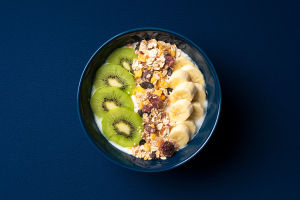Dear Lykkers, Afternoon tea is more than just a break in the day; it’s a cherished tradition that brings elegance, relaxation, and indulgence together in a delightful experience
Originating in 19th-century England, this charming ritual has become popular worldwide, symbolizing a moment of peace and luxury amidst the hustle and bustle of daily life.
1. The History of Afternoon Tea
You Know the concept of afternoon tea was introduced by Anna, the Duchess of Bedford, in the early 1840s. She found herself feeling peckish between lunch and dinner and began requesting light snacks like sandwiches and tea to satisfy her hunger. Soon, this practice evolved into a social event, with the Duchess inviting friends to join her for an afternoon meal. Over time, it became a fashionable gathering for the upper classes, with elegant settings and elaborate spreads.
2. What Does an Afternoon Tea Consist Of?
A traditional afternoon tea typically consists of three main elements: tea, finger sandwiches, and pastries. Here’s what to expect:
Tea: The star of the event, tea can range from classic English Breakfast to lighter blends like Earl Grey or even herbal options such as chamomile and peppermint. Each tea is often paired with milk, sugar, or lemon for added flavor.
Finger Sandwiches: Small, delicate sandwiches are a staple of afternoon tea, often filled with ingredients like cucumber, smoked salmon, or egg salad. The bread is cut into small triangles or rectangles, with the crusts removed for a refined presentation.
Pastries and Scones: The sweet treats served at afternoon tea often include a variety of scones, cakes, and pastries. Scones are served warm, accompanied by clotted cream and jam, while mini tarts, éclairs, and cakes add a touch of sweetness to the experience.
3. The Etiquette of Afternoon Tea
The elegance of afternoon tea is matched by its etiquette. Holding the teacup with the handle between the thumb and fingers, sipping gently, and refraining from raising the pinky finger are a few rules to remember. When eating, it’s polite to break the scone in half with your hands rather than using a sharp tool, and to use the spread sparingly.
How to have an authentic British Afternoon Tea experience
Video By DW Food
4. Modern Takes on Afternoon Tea
While traditional afternoon tea remains popular, modern variations have emerged in response to changing tastes and dietary needs. Many places now offer themed teas, vegan or gluten-free options, or even savory afternoon tea with charcuterie boards and sliders. These contemporary twists make afternoon tea accessible and enjoyable for a wider audience.
Afternoon tea remains a beloved tradition that blends history, refinement, and indulgence into one memorable experience. If enjoyed in a grand hotel, a cozy tea room, or at home with friends, afternoon tea is a wonderful way to slow down and savor the finer things in life. So, the next time you’re feeling like taking a break from your busy day, treat yourself to this timeless ritual and discover the joy of a perfectly steeped cup of tea paired with delightful snacks.


